 |
Loadin
|
 |
 |
Loadin
|
 |
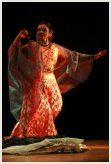 |
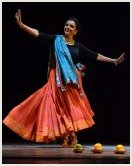 |
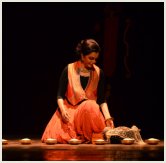 |
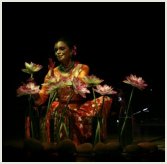 |
 |
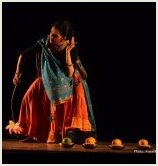 |
|
Home
| Synopsis
| Credits
| Calendar of Performances | Critics Speak | Response | Photo Gallery
a million SITA-s - Response a Neo Bharatam presentation Response - students' feedback to the performance on May 3, 2015 at the NYU Steinhardt School, Greenwich Village Storytelling in the Classroom, Spring 2015 - Emily Schorr Lesnick Dr. Anita Ratnam embodied the epic in her performance of The Ramayana at the Provincetown Playhouse on Sunday, May 3. In a performance that lay at the intersections of theater, dance, music and storytelling, Ratnam and her two musicians explored the ways women have moved history forward throughout the ages. She performed for a packed house full of community members and students across ages and nationalities. The audience was rapt withal, occasionally laughing at an aside or a particularly self aware line about relationships between men and women, but mostly silently taking in the story. I came into the space with some knowledge of the content and with much hype around Dr. Ratnam’s work. I knew there were questions around whether her performance was traditional storytelling. I also entered with my own desire to learn more about Indian mythology and culture. From a visual standpoint, the show was breathtaking; the choreographed movements, colorful fabrics, intricate masks brought the story to life. Ratnam embodied many women in the story, as well as animals (she portrayed a frog with a neat green glove and hand movements) and elements. Interestingly, she did not portray men, and two masks for the main men in the story flanked the stage and framed the action. The moments Dr. Ratnam sang and danced were where she seemed most activated, as if the story was flowing through her and she was merely a vessel for the action. The moments Dr. Ratnam spoke added a layer of removal from the story in a curious way, though I am still processing if that was reflective of her performance or my own perception in the audience. I struggled to follow the story, as there were many characters involved and the plot jumped from backstory to current story. At the end of the performance when Dr. Ratnam spoke more of her process, I was able to understand better. In fact, I found the metamoments that commented on the relationship between story and power to be the most impactful. For example, at one point during the performance, Anita broke character and turned to her musician and asked how many songs she knew about Rama (Sita’s husband) and how many songs she knew about Sita. The discrepancy (dozens for Rama and none for Sita) illuminated the ways that The Ramayana has been filtered through a patriarchal lens to make Rama the protagonist, not Sita. Another powerful moment was when Dr. Ratnam entered the audience at the end of the show and listed the names of “A Million Sitas,” women across time and place and circumstance, as all being tied to this story, one of destiny and agency. Her explanation of the role of the many women in challenging and doing the work of fate clarified and made sense of what had been a confusing performance for me. I also gained much from her explanation of the way this story is (re)told in different ways in India, with three main versions, and that her story was both a descendent from those stories, and also distinctly her own. In many ways, this performance fulfilled my understanding of “classical,” “bardic” storytelling in its telling of universal truths and moments of engaged sharing of myth with the audience. However, the intentional feminist framing and blending of English with Hindi, and the use of costume and prop and infusion of music and dance brought this specific story to life in its particular beauty. Dr. Ratnam’s performance proved the way we humans are, in the words of Erdoes & Ortiz, “connected to the nurturing womb of mythology” (p. xi), a mythology that links religion and history and nature, a mythology that explains gender and power and destiny, a mythology that makes sense of our world.. Home | Contact |
About Arangham | About Anita Ratnam |
Events | Archive of events | Calendar of events
| On Tour | Press
|
Articles | Lectures | Publications | Active Repertoire | Festivals | Conferences | Rituals & Revivals | Workshops | Art & Activism |